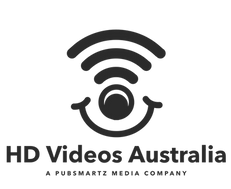The Evolution of TV Advertising: Traditional vs Connected TV
- HD Videos Australia

- Feb 13
- 2 min read
Read on to explore the differences, benefits and strategies for best practice in TV advertising.

Traditional Linear TV: What is it?
Definition: Broadcasting content on predetermined schedules
Types:
Cable TV
Satellite
Over-the-air broadcasts
Traditional TV Advertising Implementation Process:
Audience identification
Campaign planning
Ad creation
Media buying
Broadcasting
Performance monitoring
Strategy adjustment

Connected TV (CTV): What is it?
Definition: Television content streamed via internet-connected devices
Components:
Smart TVs
Mobile devices
OTT (Over-the-Top) devices
*Key Distinction: CTV refers to devices, OTT to content delivery method
Comparative Analysis

Traditional TV Strengths
Broad Reach
95% US household penetration
Established viewer habits
Prime-time viewing patterns
Brand Credibility
High perceived legitimacy
Trust factor
Professional association
Storytelling Impact
Emotional connection
Memorable content
High production value
Traditional TV Limitations
Measurement Challenges
Limited tracking capabilities
Uncertain viewer engagement
Imprecise targeting
Viewer Behavior
86% skip commercials
Multi-device distraction
Declining viewership
Cost Structure
High upfront investments
Rising rates
Limited flexibility
Connected TV Strengths

Advanced Targeting
First-party data utilization
Third-party data integration
Precise audience segmentation
Performance Metrics
ROAS tracking
Site visit measurement
Completion rate monitoring
Cost per visit analysis
Google Analytics integration
Case Study Results
Mattress Retailer: 16:1 ROAS
Software Brand: 2X higher ROAS vs retargeting
Travel Site: 5.28% site visit rate
Technical Requirements for CTV Advertising
Video Specifications
Ratio: 16:9, 1920×1080
Duration: 30 seconds maximum
Format: .mp4 or .mov
Size: Max 200MB
Frame Rate: 23.98, 25, or 29.97 FPS
Bit Rate: ≥2500 KBPS
Audio Requirements
Mix Level: -10db to -14db
Dialogue: -12db to -15db
Music: -18db to -22db
Effects: -10db to -20db
Implementation Best Practices
Creative Elements
Persistent logo placement
Clear URL display
Strategic voice-over usage
Strong call-to-action
Campaign Strategy
Multiple ad length options (15/30 seconds)
Platform consolidation
Quality inventory selection
Performance monitoring
Market Positioning
Direct-to-Consumer focus
Cross-channel integration
Incremental growth targeting
Audience behavior adaptation
Future Outlook
Projected doubling of ad spend by 2023
Increasing cord-cutting trends
Growing DTC brand adoption
Enhanced targeting capabilities
Improved measurement metrics
Recommendations for Advertisers
Start with existing video assets review
Develop both 15 and 30-second versions
Implement clear tracking mechanisms
Choose consolidated platform solutions
Focus on performance metrics
Maintain creative flexibility
Monitor viewer behavior patterns
Optimize based on analytics
Key Performance Indicators
Return on Ad Spend (ROAS)
Site Visit Rate
Completion Rate
Cost per Completed View
Geographic Performance
Device-specific Results
Conversion Tracking
Audience Engagement Metrics
_edited.png)











Commentaires